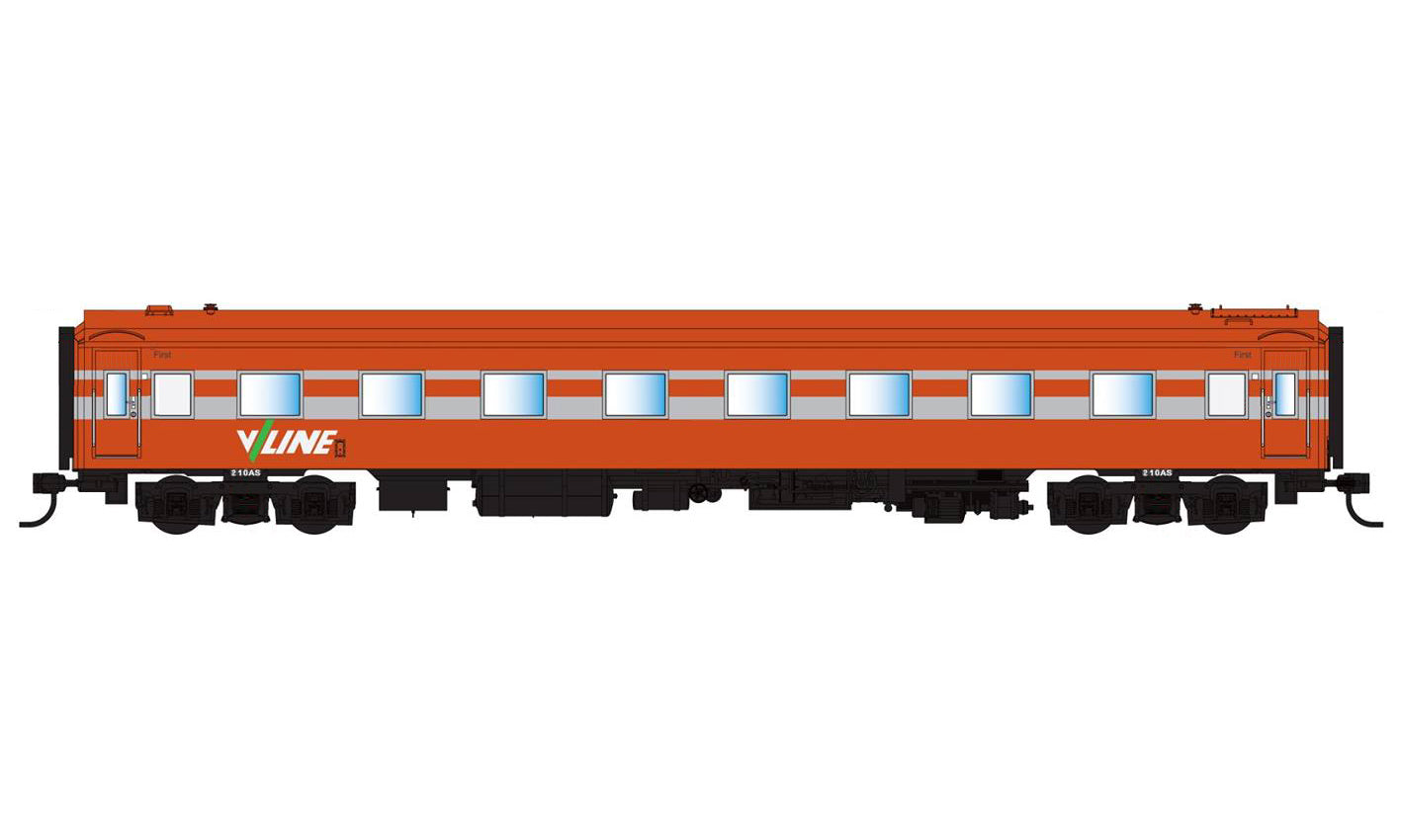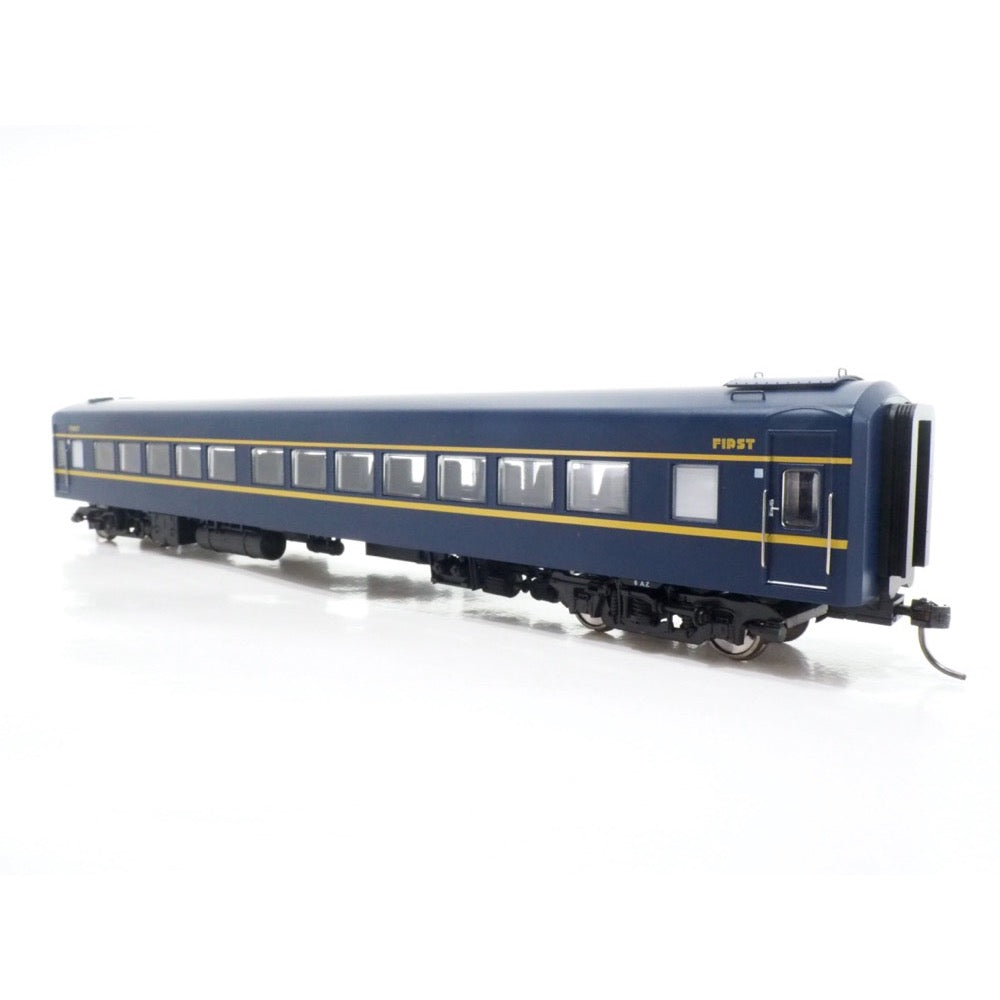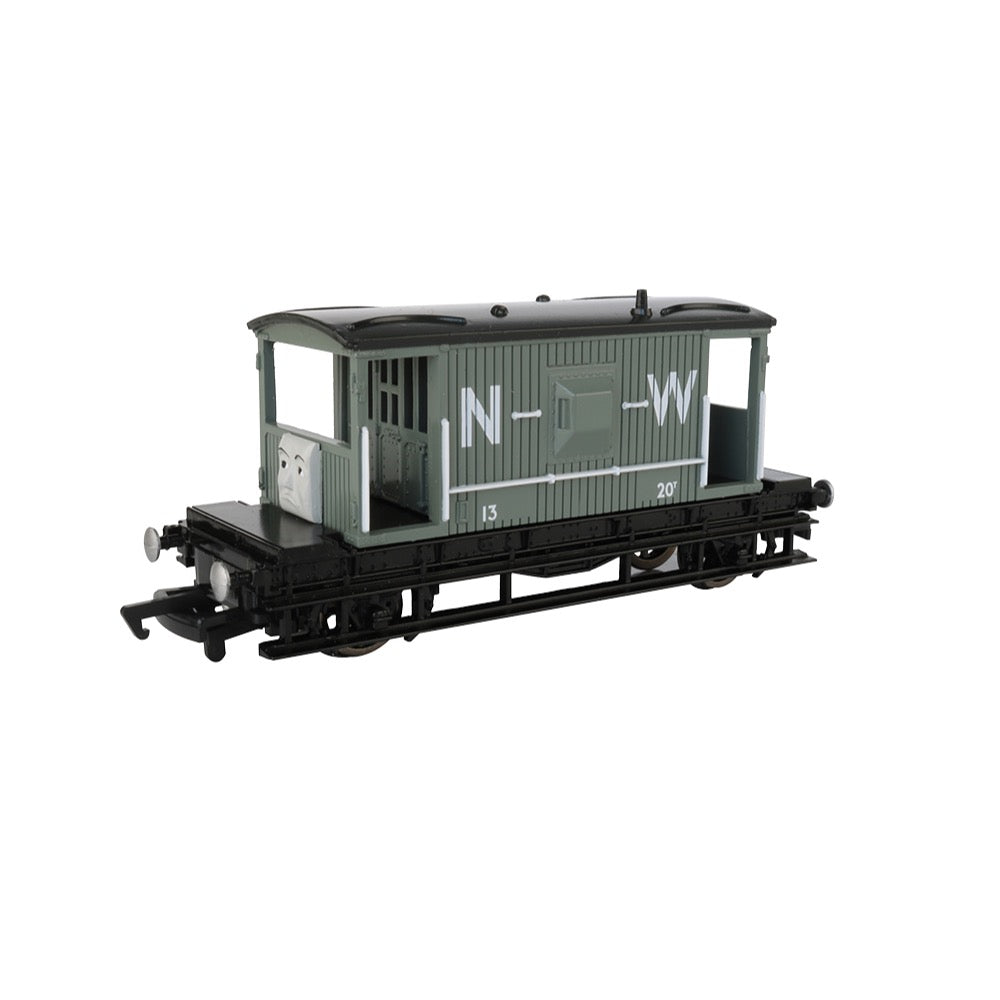
On Track Models HO VR VLCX V/line Pack 6 3 pack
These were Louvre Vans built for the Victorian Railways by a combination of Bendigo North, Newport & Ballarat North Workshops between 1962 & December 1967.
Vans 1 - 87 and 99 - 135 were introduced as VLF's, before being recoded VLX between November 1963 & June 1965.
Vans 88 - 98 were also built to this pattern but were introduced as VLX's. These vans were fitted with timber floors.
Vans 136 - 660 were built to a slightly different design and featured steel floors. These were introduced as VLX.
As introduced these wagons had red roofs from new, however these were repainted silver in the late 1960's
During the 1979 reclassification, these wagons were recoded VLCX.
In 1994 some wagons were transferred to the newly formed National Rail Corporation and were recoded to RLCX before being returned to V/Line and renumbered to their old numbers.
And during 1994 some 20 random numbered VLCX vans were recoded to VLVX for use in Freight Centre Traffic.
These wagons have appeared in VR Wagon Red as originally produced with no logo, then a small, med, and large VR logo.
Later they received the V/Line logo carrying this through to the 80's & 90's until some were painted Freight Australia Green, then later Pacific National Blue.
A couple of vans made it into West Coast Railway Blue.
Door styles over the years changed from the original plain panel doors, to single louvre, then twin louvre, and finally VHX style doors. Combinations of the first 3 doors are common.
These vans include Genuine Kadee (R) Couplers, and AMRA profile wheels.
Features include opening sliding doors, simulated timber floors on the VLF style wagons, and a steel chequer plate floor on the VLX variant.
They also come with internal Cargo barriers, and a combination of either plain pattern, twin louvre doors, or VHX style doors.
These wagons feature the end louvre on the roof panel.
Specification
- Three HO Scale VLX Models
- Style: 3 VLCX Vans with V/Line logos.
- Wagon numbers: VLCX 459B, VLCX 593J, & VLCX 616C
- Era covered: 1982 - 2000
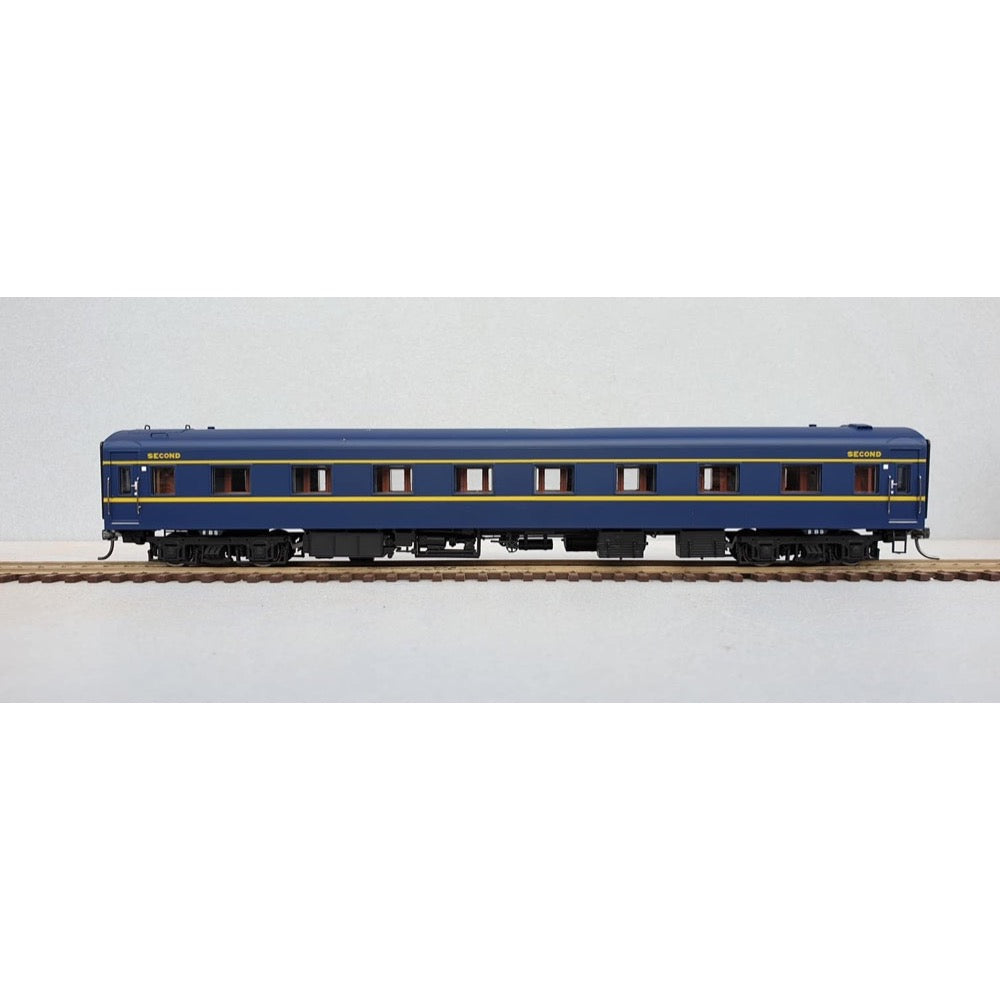
Powerline PC-421E HO 8 BS VR Blue & Gold S Type Carriage Second Sans Serif
Powerline PC-421E HO 8 BS VR Blue & Gold S Type Carriage Second Sans Serif
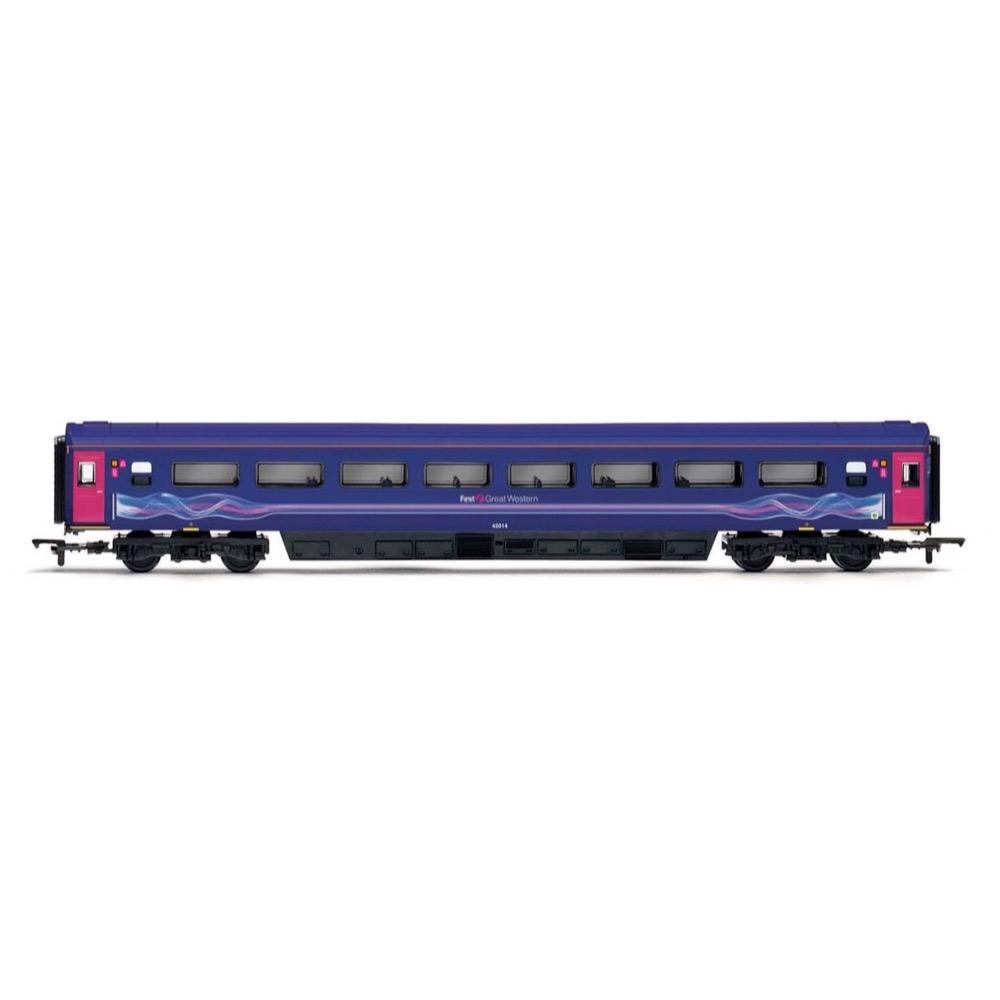
Hornby R40037A OO FGW Mk3 Trailer Standard Open (TSO) Coach D42360
In-order to allow running at 125 mph on Britain's Victorian era railways, new rolling stock was needed by British Railways. Significant improvements over the Mk2 included new secondary air suspension between the bogies and the coach body as well as aerodynamic skirting on the underframe.
Mk3 coaches are 75ft (23m) long enabling far greater capacity than older coaches. Mk3 coaches also incorporate disk breaks and wheel slip protection enabling faster deceleration. The first Mk3 coaches to be delivered were used as part of the HST prototype along with the two Class 41 diesel power cars in 1972. Mk3 coaches entered service in 1975 along with the Class 43 forming the iconic InterCity 125 trainset. After the HST Mk3 coach variant was introduced, further Mk3 coaches were introduced to the West Coast Mainline for use as part of locomotive hauled trains. Whilst Mk3 stock is standard for HST units, the standard locomotive hauled stock is Mk3a.
Mk3a stock differs from Mk3 stock due to the inclusion of buffers as well as a different electrical system that uses motor generator units in each coach to power air conditioning and other ancillaries Mk3a stock was built until 1984, before 3B stock with improved seating and lighting was built from 1985 to 1988. In 1996, as a result of the privatisation of British Rail, The InterCity Great Western franchise was awarded to Great Western Trains who in 1998 became First Great Western (FGW).
FGW operated Mk3 coaches in HST car-sets from London Paddington to various locations in the west, south wales and south-west. FGW was rebranded as Great Western Railways in September 2015 and in 2017 started to replace its InterCity 125 sets with new Hitachi Class 800 and 802 sets.
Specification
- Item Length - Without Packaging (cm): 30.3
- Item Height - Without Packaging (cm): 5
- Item Width - Without Packaging (cm): 3.5
- Item Weight - Without Packaging: 0.19
- Item Scale: 1:76 Scale 00 Gauge
- License: No
- Finish: Painted
- Colour: Blue
- Gauge: OO
- Operator: FGW
- Designer: BREL
- Livery: FGW blue
- Minimum Curve (mm): Radius 2
- Number of Parts: 1
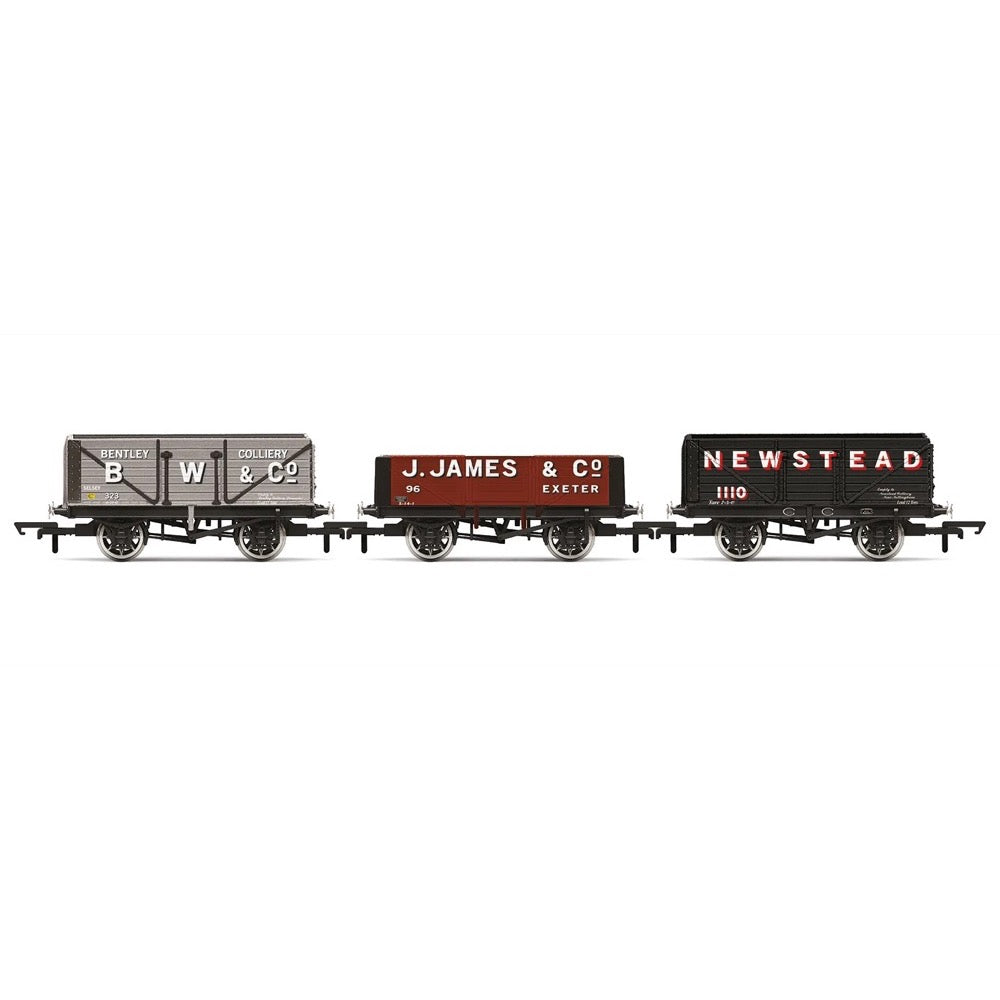
Hornby R60103 OO Triple Wagon Pack B.W and Co J. James and Co. and Newstead Colliery Era 3
The open wagon is one of the most ubiquitous types of wagon to ever see service in the UK. Regardless of their size, the wagons could be seen almost anywhere from individual wagons being moved by small tank engines to large rakes of them being hauled behind some of the largest tender engines of the day.
The wagons were largely unspecified, they would carry any cargo that didn't require any protection from the elements. As time progressed and rolling stock developed, the general use wagon would see its use become more limited, wagons designed specifically around their cargo would begin to supersede the standard open wagon through the 1940s and 1950s.
Many open wagons would find their way into private ownership, with each company then commissioning one of the Big Four companies to move their wagons to their destination. These plank wagons are typical of the kind that could be seen making up a colourful patchwork behind one of the Big Four's freight engines.
These open wagons are fitted with NEM couplings and metal wheels, allowing them to roll freely and therefore allowing them to run in long rakes behind even small locomotives as may sometimes be tasked with hauling them. These wagons also have internal plank detailing, a load need not be fitted if you do not wish to add one.
Specification
- Item Length - Without Packaging (cm): 21
- Item Height - Without Packaging (cm): 4
- Item Width - Without Packaging (cm): 3.5
- Item Weight - Without Packaging: 0.06
- Item Scale: 1:76 Scale 00 Gauge
- Finish: Painted
- Colour: Multiple
- Gauge: OO
- Operator: Private Owner
- Designer: RCH
- Livery: Private Owner
- Minimum Curve (mm): Radius 2
- Number of Parts: 3
- Buffer Type: Fixed Metal Buffers
- Coupling Type: NEM Tension Lock
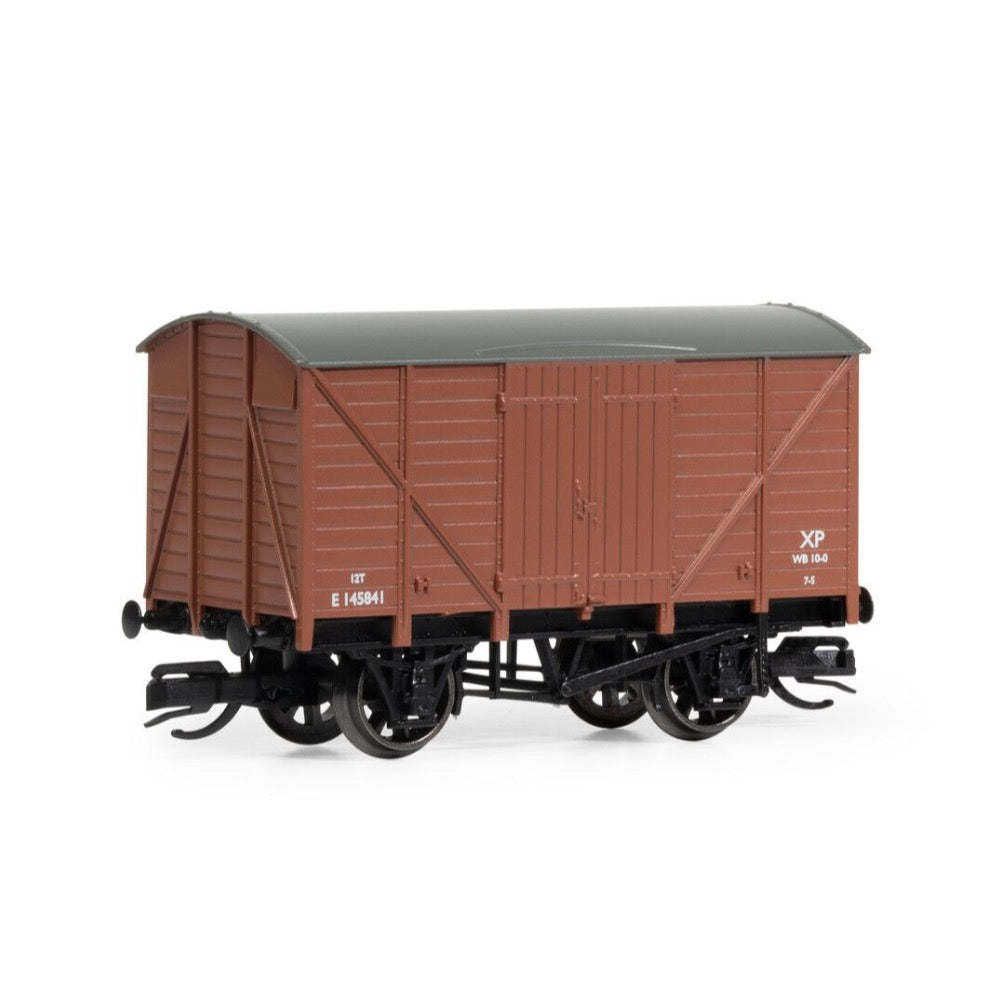
Hornby TT6007 TT BR Vent Van B777345
The vent van was a small multipurpose goods van which would transport all manner of items whilst keeping them protected from the wind and rain. The wagon design features a single vent on each end of the structure allowing air to flow thereby maintaining a cooler air temperature, beneficial for the transportation of perishable food items. Closed vans would often be loaded with all manner of miscellany such as flour, meat, parcels or perhaps scale models.
Specification
- Item Length - Without Packaging (cm): 6.6
- Item Height - Without Packaging (cm): 3
- Item Width - Without Packaging (cm): 2.2
- Item Scale: 1:120 Scale
- Finish: Painted
- Colour: Bauxite
- Gauge: TT
- Operator: BR
- Livery: BR
- Minimum Curve (mm): Radius 1
- Number of Parts: 1
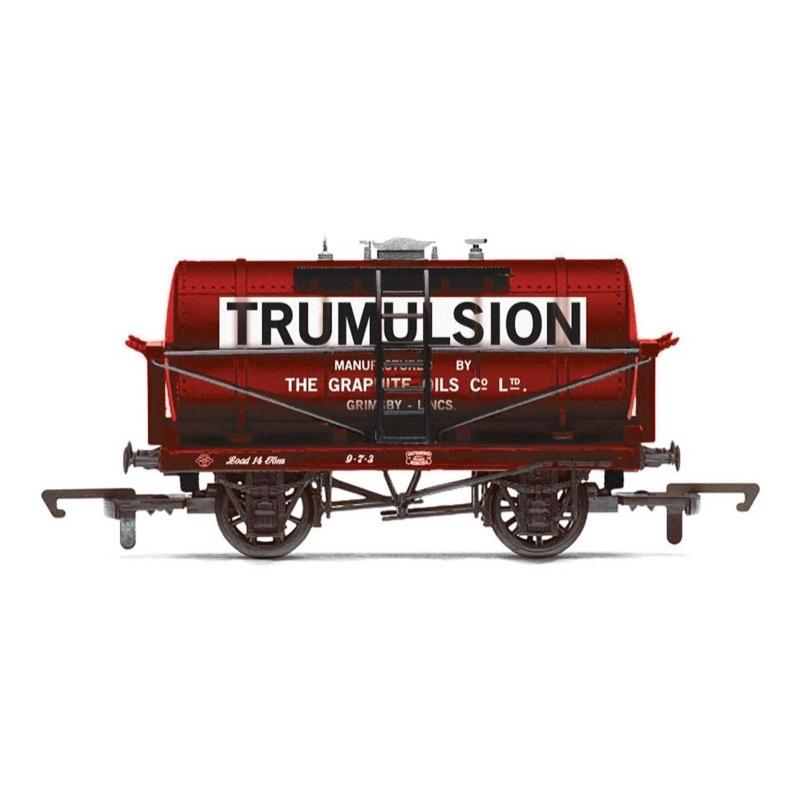
Hornby R60038 OO 14T Tank Wagon Trumulsion
This 14T tank wagon was used to transport Trumulsion Cold-Applied Bitumen, manufactured by the Graphite Oils Co. of Grimsby. This example is typical of the tank wagon traffic that would be found on British railways in the 20th century. Tank wagons were divided into class A and Class B with the less common Class A wagons being built to contain more volatile substances.
Specifications
- Item Length - Without Packaging (cm): 9
- Item Height - Without Packaging (cm): 5
- Item Width - Without Packaging (cm): 3.5
- Item Weight - Without Packaging: 0.03
- Item Scale: 1:76 Scale 00 Gauge
- License: No
- Finish: Painted
- Colour: Red
- Gauge: OO
- Operator: Private owner
- Livery: Private owner
- Minimum Curve (mm): Radius 1
- Number of Parts: 1
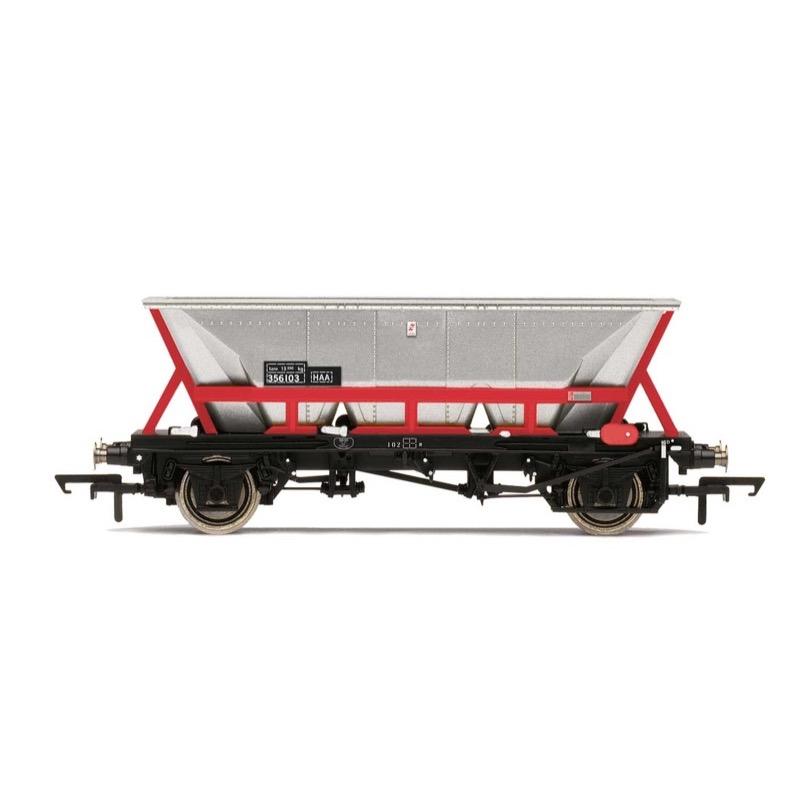
Hornby R60062 OO HAA Hopper BR Railfreight
Built from 1964 to 1977, HAA wagons were built as method to move coal more efficiently, particularly with the aim of improving to supply of coal to power stations. It was intended that trains of these wagons could run in a continuous loop from the colliery to the power station and back, with machinery I place to allow loading and unloading at slow speeds. In reality it was often the case that the infrastructure to allow this type of running did not exist, particularly at the collieries, but nonetheless these wagons greatly improved coal transfer. With the decline of Britain's coal industry these previously extremely common wagons have now become extremely rare with most having been either scrapped or rebuilt as another form of wagon.
Specifications
- Item Length - Without Packaging (cm): 4.5
- Item Height - Without Packaging (cm): 15.6
- Item Width - Without Packaging (cm): 9
- Item Weight - Without Packaging: 0.09
- Item Scale: 1:76 Scale 00 Gauge
- License: No
- Finish: Painted
- Colour: Silver
- Gauge: OO
- Operator: BR Railfreight
- Livery: Railreight Silver
- Minimum Curve (mm): Radius 2
- Number of Parts: 1
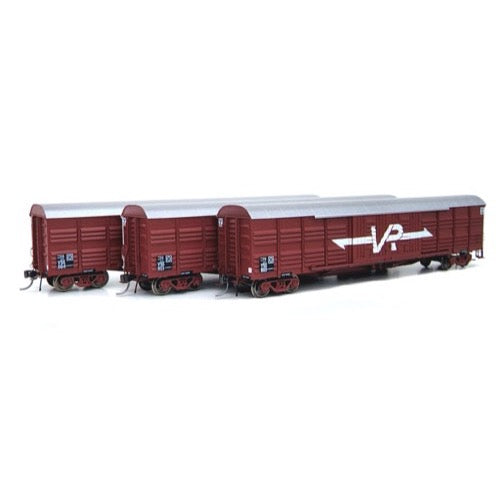
On Track Models HO VR VSX VR Large Logo Pack 8 3 pack
There were 250 VSX Louvre Vans built for the Victorian Railways between 1972 & 1976. The initial batch of 100 were built by the Ballarat North Workshops, with the Newport Workshops building a further 50 wagons. The final batch of 100 Vans were built once again by the Ballarat North Workshops.
Gauge convertible, they have been used extensively across mainland Australia on both standard gauge and on their own native broad gauge. They have visited all of the major state capital cities and rail centres throughout Australia.
From carrying general goods, pet food, newsprint, and in later years bagged rice, these 56’ Louvre Vans have proved to be a versatile wagon and the backbone of the Victorian Railways.
These models feature opening sliding doors, checker plate pattern on the internal floor surface, cargo barriers, a choice of plain pattern or louvre doors, and versions with and without the end louvre on the roof panel. They also come with Genuine KD Metal Couplers, and metal pin point axles.
There are 6 body styles produced across 11 different packs. Each pack contains 3 ‘HO’ Scale models.
Specification
- Three HO Scale VSX Models
- Style: 3 VSX Vans with Large VR logos
- Wagon numbers: VSX 864, VSX 913, & VSX 1021
- Era covered: 1970's - Mid 1980's
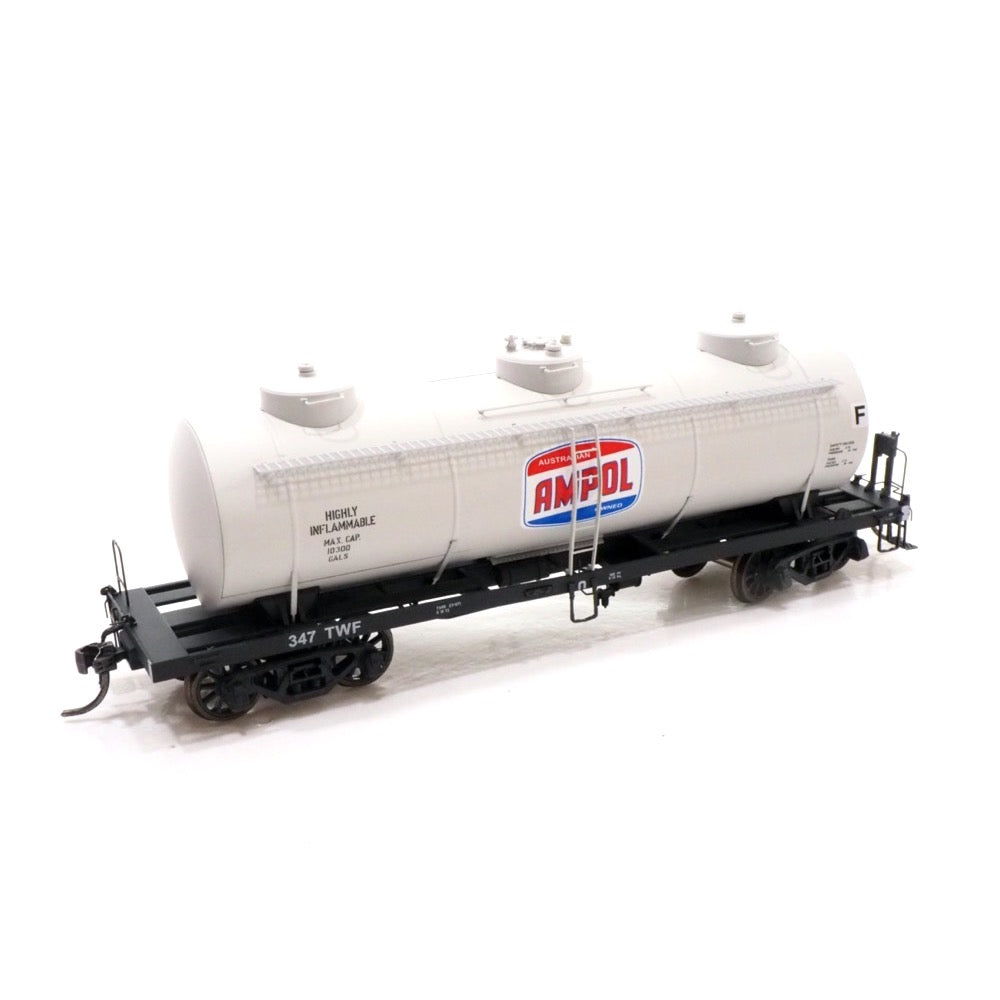
SDS Models HO VR TWF 10000 Gallon Tank Car TW 347 Ampol
10000 Gallon Rail Tank Car Series
SDS Models is producing a range of 10 000 gallon rail tank cars based upon a standard VR design 38 foot welded underframe. These HO Gauge models are presented with four unique, oil company specific, tank designs and accurately portrait the prototypical differences between each companies versions to meet their intended requirements. The models cover all major brands used in Victoria with the exception of the Shell Oil Company whose fleet rode on 36 foot riveted underframes.
The models are available in triple-packs and are categorised into three groups:
- OT - as delivered in the early 1950s to the early 1960s TW / TWF - 1960s to the late 1970s
- VTQA / VTQF / VTQY - 1980s and 1990s.
Model Features:
- Highly detailed Ready-to-Run HO scale model
- Injection moulded high quality plastic body
- Etched metal walkways
- Full brake rigging and underfloor detail
- Semi scale metal rimmed wheels
- OT bogie, 5’11” wheelbase with 36" diameter wheels.
- Genuine Kadee #158 whisker coupler
- 18” Minimum radius recommended


